Manduca jasminearum
Manduca jasminearum
Ash Sphinx
(Guérin, [1832])
Sphinx
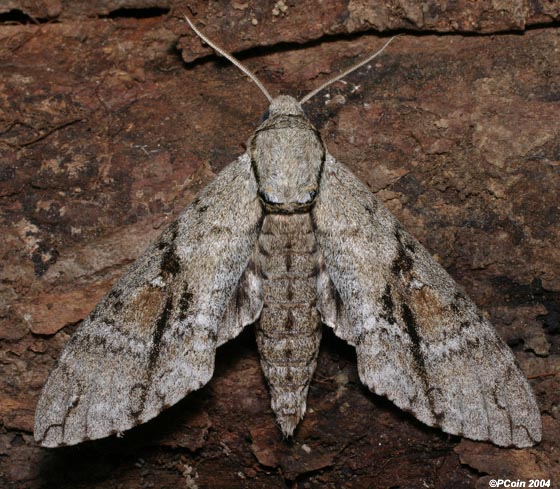
Manduca jasminearum
© Patrick Coin, used with permission,
Durham County, North Carolina,
July 20, 2003
This site has been created by Bill Oehlke
Comments, suggestions and/or additional information are welcomed by Bill.
TAXONOMY:
Family: Sphingidae, Latreille, 1802
Subfamily: Sphinginae, Latreille, [1802]
Tribe: Sphingini, Latreille, 1802
Genus: Manduca Hubner, [1807] ...........
Species: jasminearum (Guérin, 1829-[1831])
|
DISTRIBUTION:
The Ash Sphinx, Manduca jasminearum
(Wing span: 3 5/16 - 4 1/8 inches (8.4 - 10.5 cm),
flies from Connecticut south to northern Florida, west to Missouri and Mississippi. It is most common along the
East Coast.
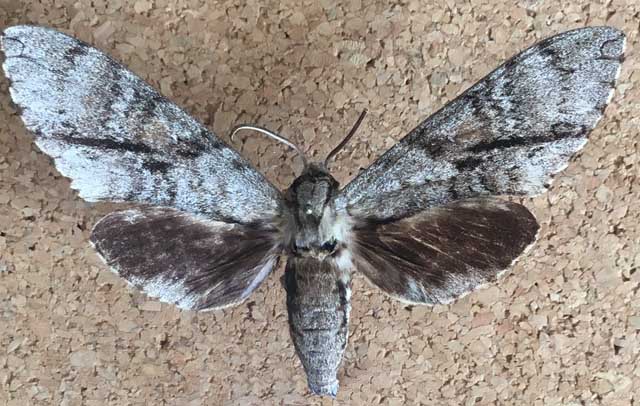
Manduca jasminearum, Metcalfe County, Kentucky,
July 23, 2011, courtesy of Derek Bridgehouse.
Below is a surprise from Leamington, Ontario, Canada, courtesy of Mike Matheson. Although Leamington is in the southernmost extreme of Ontario,
this sighting still represents a significant extension of jasminearum's known range. Perhaps this is a wind assisted stray, an escapee or released specimen,
or jasminearum is in the process of extending its range. To my knowledge this is a first report of jasminearum in Canada.
It is also possible the pupa came into Canada in soil in a potted plant. It will be interesting to see if more sightings occur in the near future.
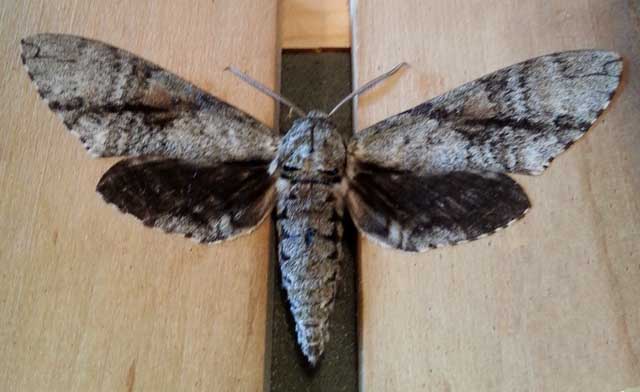
Manduca jasminearum, Leamington, Ontario,
July 21, 2017, courtesy of Mike Matheson.
The upperside of forewing is gray to grayish brown with a black line running from the middle of the costa to the
middle of the outer margin; the line may be broken near the margin. There is a splash of brown around the cell spot. The upperside of the hindwing is mostly black,
with gray at the lower margin.
Manduca jasminearum courtesy of Dale Clark. |
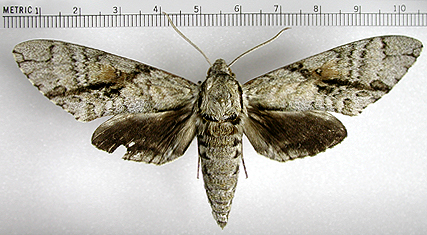 |
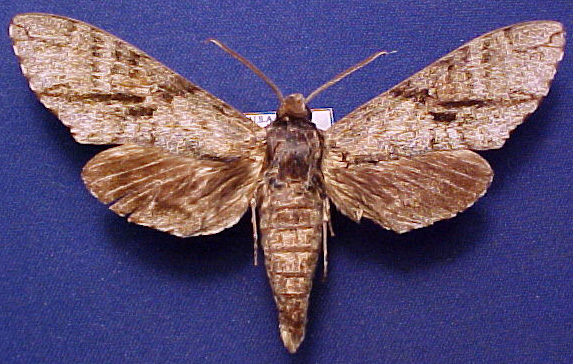
Manduca jasminearum courtesy of John Vriesi.
FLIGHT TIMES:
Manduca jasminearum adults fly as two broods from May through September. Adults nectar at flowers.
ECLOSION:
Pupae probably wiggle to surface from subterranean chambers just prior to eclosion.
SCENTING AND MATING:
Females call in the males with a pheromone released from a gland at the tip of the abdomen.
EGGS, LARVAE, PUPAE:
Larvae feed on ash in the Fraxinus genus. Syringa and Ulmus have also been reported.
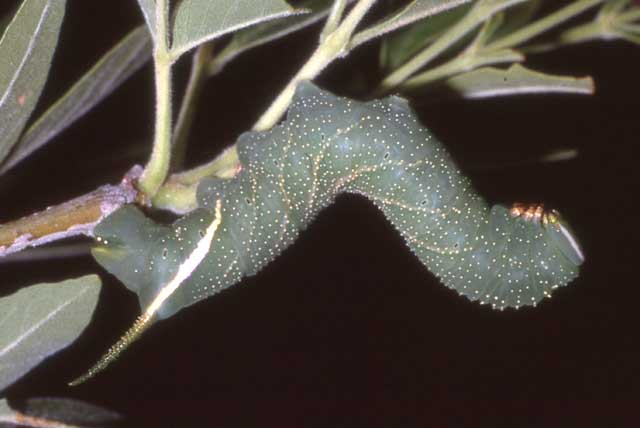
Manduca jasminearum fourth instar, Gulf Hammock, Levy County, Florida,
on Fraxinus courtesy of James P. Tuttle.
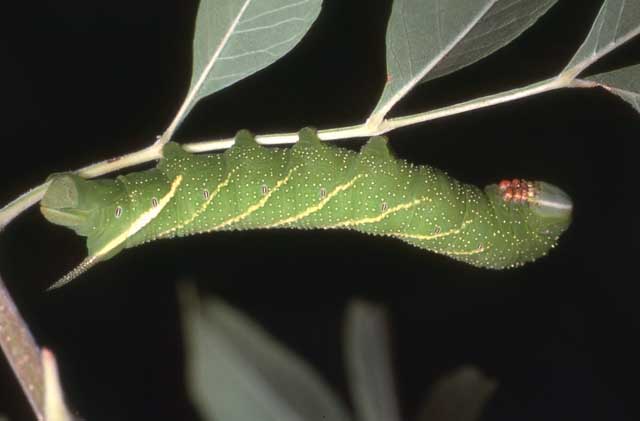
Manduca jasminearum fifth instar, Gulf Hammock, Levy County, Florida,
on Fraxinus courtesy of James P. Tuttle.
Use your browser "Back" button to return to the previous page.
Return to Sphingidae Index
Return to Sphingini Tribe






